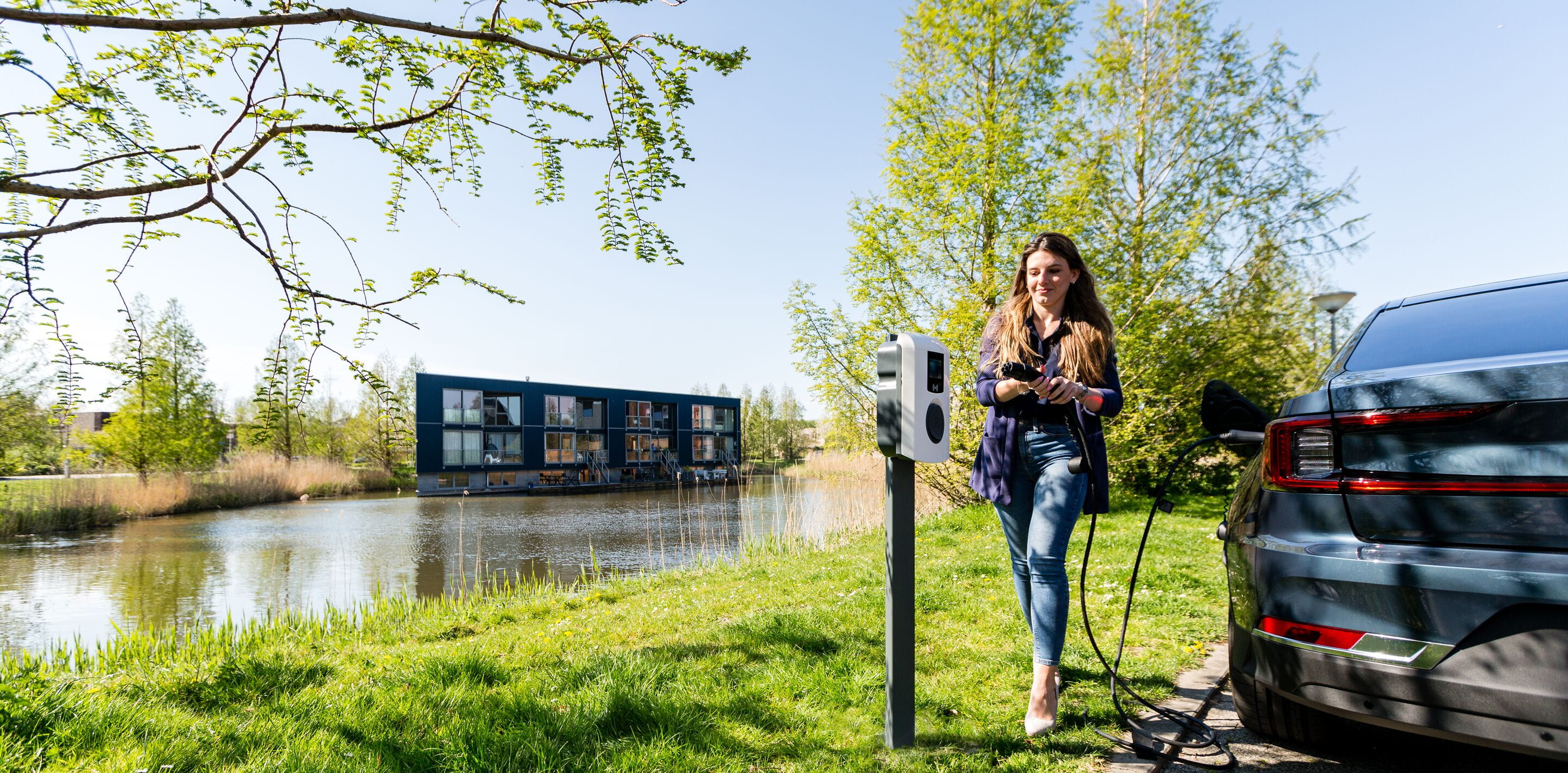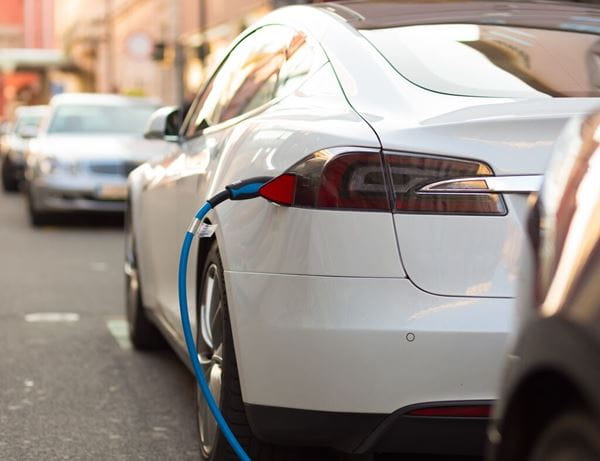
EV Charging: How Long Does It Take?
Refuelling isn’t a common topic when talking about petrol or diesel cars, but it’s an inevitable part of the conversation with their electric counterparts. Charging isn’t necessarily challenging, but it is different to filling with fuel, and we often hear questions about how long it takes, and what options are available to drivers.
This blog will take you through:
- Variables affecting charging times
- Different types of chargepoint, and their relative speeds
- Additional best charging practices
Which variables affect how long it takes to charge?
Electric vehicle technology has evolved quickly. Some of the newest chargepoints can offer almost 100 times faster top-ups than the earliest public networks installed a decade ago. However, what you’ll experience as a driver can differ, depending on:
1. What charging equipment are you using?
Not all cars or chargepoints are the same, and there can be several factors that limit the charging speed of an electric vehicle:
- The electrical capacity of the grid connection
- The power of the chargepoint, measured in kilowatts (kW)
- The capability of the car’s on-board charger
Your car will only charge as quickly as the least powerful component.
2. How big is your battery?
Just like the fuel tanks in petrol or diesel cars, the capacity of an electric vehicle battery varies between vehicles. The amount of energy it can store is measured in kilowatt-hours (kWh) and larger batteries can take longer to fully charge – though not necessarily.
Vehicles with larger batteries are usually designed to for long-distance driving, and tend to be compatible with faster chargepoints. For example, a 2011 Nissan LEAF took 30 minutes to charge to 80%, giving a range of 87 miles. Today’s Hyundai IONIQ 5 has more than three times the battery capacity but takes just 18 minutes to charge to 80%, which offers a range of 252 miles.
3. What is your state of charge?
State of charge (SoC) shows the amount of energy left in your battery, and it has a big influence on charging times – especially if you’re using the fastest chargepoints.
Batteries can be filled quickly when they’re almost empty, but the car will automatically slow the rate of charging as it gets closer to being full. It’s a bit like filling a glass with water, and steadily closing the tap as it reaches the rim.
Every car behaves slightly differently, but in most cases the charging speed will drop off significantly at 80% SoC (unless you’re already using a slow chargepoint). If you’re on a long journey and using rapid chargepoints, it’s usually much quicker to unplug and carry on to the next charger than it is to wait for that last 10-20%.
4. How warm is the battery?
An EV battery performs best between 20 and 30 degrees Celsius, affecting power output and the ability to charge. Most new models include sophisticated system to keep the pack in its optimum operating range, either bringing it up to temperature in cold weather, or keeping it cool if it’s working hard during the summer.
High-end brands, such as Tesla, have pre-heating enabled for fast charging. This costs energy but gets you back on the road quicker. If your EV doesn’t have pre-heating, be prepared to wait longer for a charging in the winter months.
What are the different types of chargepoint?
Chargers come in two main categories: alternating current (AC) and direct current (DC). They’re designed for different types of charging, and installed to suit how long vehicles are stopped for.
AC Chargers
These are slower chargepoints, typically installed in home and near-home environments and designed for top-ups while the car is parked for several hours. The ‘Type 2’ connector was standardised across Europe almost ten years ago, for plug-in hybrid and electric cars. Most chargepoints either have a tethered cable, or a socket compatible with the cable in the boot.
The majority of home and public AC chargepoints offer charging at up to 7kW, which will restore around 25-30 miles of range per hour plugged in. That tends to be the fastest charging rate that EVs are capable of on an AC connection, though the Renault ZOE can accept up to 22kW if you can find a suitably powerful chargepoint.
DC Chargers
These are the fastest chargepoints on the market, converting an AC power supply to DC which can be supplied straight into the battery. Typically found at motorway service areas and close to major routes, they’re usually designed to offer an 80% charge in less than half an hour while drivers take a rest stop.
There are three types available:
- Combined Charging System (CCS) – this is the European standard, adding a couple of pins to the Type 2 AC plug. It’s what you’ll find fitted to most new electric cars, and a handful of plug-in hybrids. The latest CCS chargepoints charge at up to 350kW.
- CHAdeMO – this is the Japanese standard, but it’s common in Europe because it’s used by the popular Nissan LEAF and Mitsubishi Outlander PHEV. A lot of rapid charging locations still have CHAdeMO points, but they’re typically no more than 50kW and Nissan has now adopted CCS for vehicles sold in Europe.
- Tesla Supercharger – European Tesla models use an adapted version of the Type 2 or CCS plug for the fastest charging speeds. The latest units offer up to 250kW charging but, aside from a few locations, you’ll need a Tesla to use them as they communicate directly with the car before they start charging.
Additional best practices
1. Plan your route to optimise battery usage
There are several apps to help you plan the perfect route . We recommend using Shell Recharge, which gives users access to around 300,000 charging points across Europe. The app has a route planning feature that shows you available charging stations and lets you filter for different charging speeds. Zap Map and A Better Route Planner can also plot routes to suit your car, including the shortest possible detours and charging stops.
2. Don’t overuse rapid chargers
Rapid charging is a quick fix, not a long-term solution. These chargepoints put a lot of current into the batteries in a short period of time, and the increased strain means the battery wears down faster. According to Kia, eight years of standard charging will give you 10% more battery life than eight years of fast charging.
3. Avoid fully charging – unless you need it
To stop your battery degrading over time, it’s best to stop the SoC from going too low or too high. Experts recommend keeping your EV between 10% and 90% charge if possible to prolong the life of the battery. Unless you’re planning a long journey which needs maximum range, it’s worth limiting the maximum SoC to 90% if the car lets you do so.
Still have questions? Check out our FAQs for EV charging!
Our net-zero commitment
LeasePlan is leading the transition to zero-emission mobility and has set itself the goal to achieve net-zero tailpipe emissions from its funded fleet by 2030. As a founding member of the EV100 – a global initiative of forward-looking companies committed to accelerating the transition to EVs – sustainable mobility is at the heart of everything we do.

.jpg?rev=3adbd558867c4d92bf9f22752f12a09c&mw=600)

